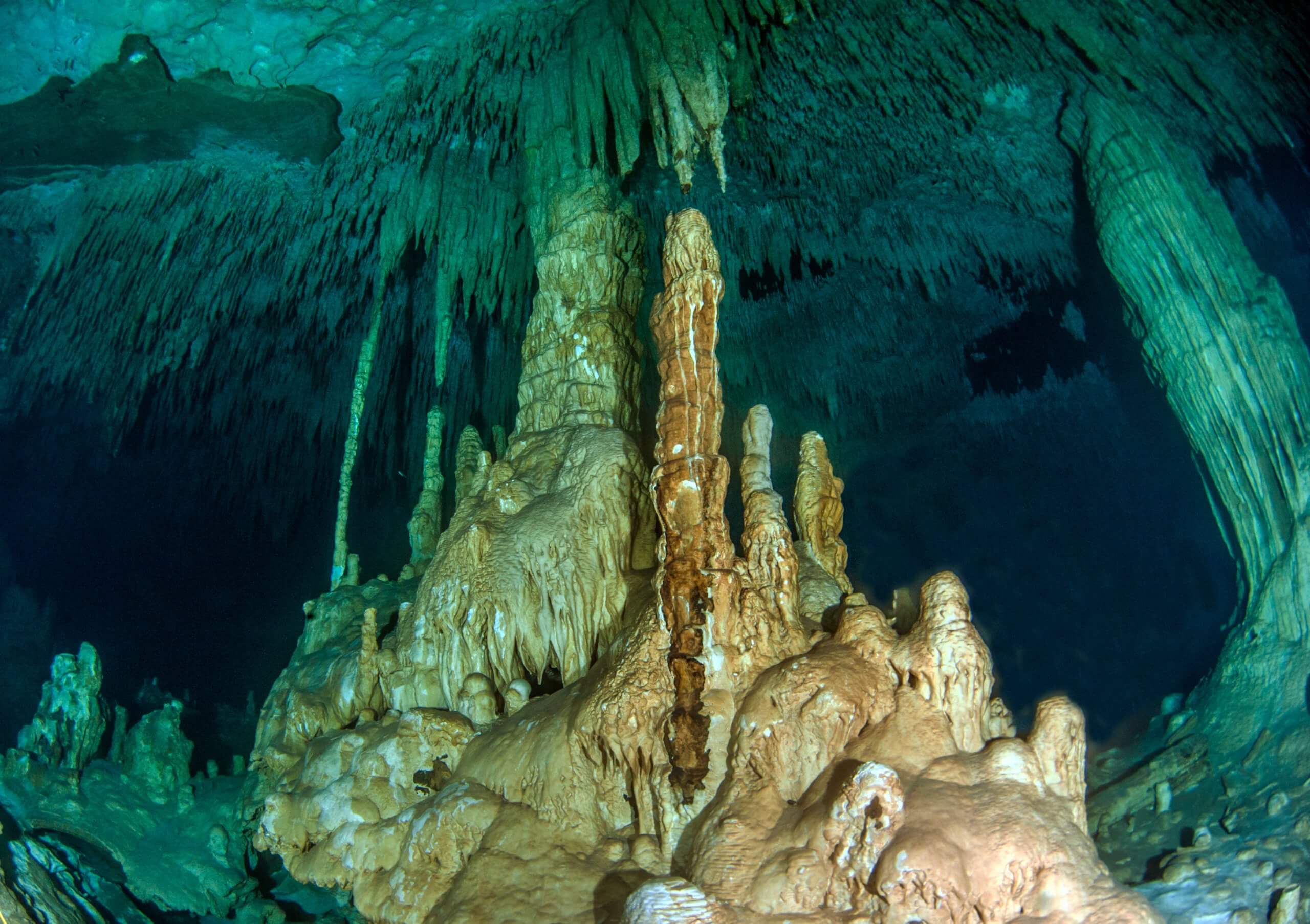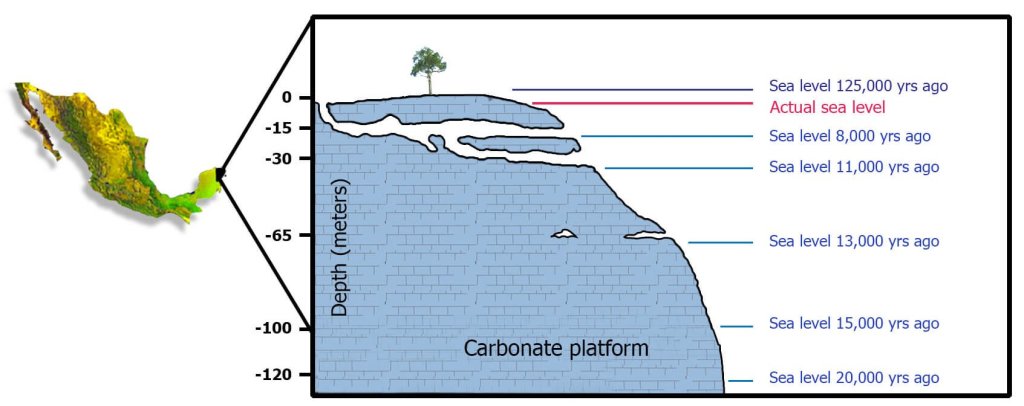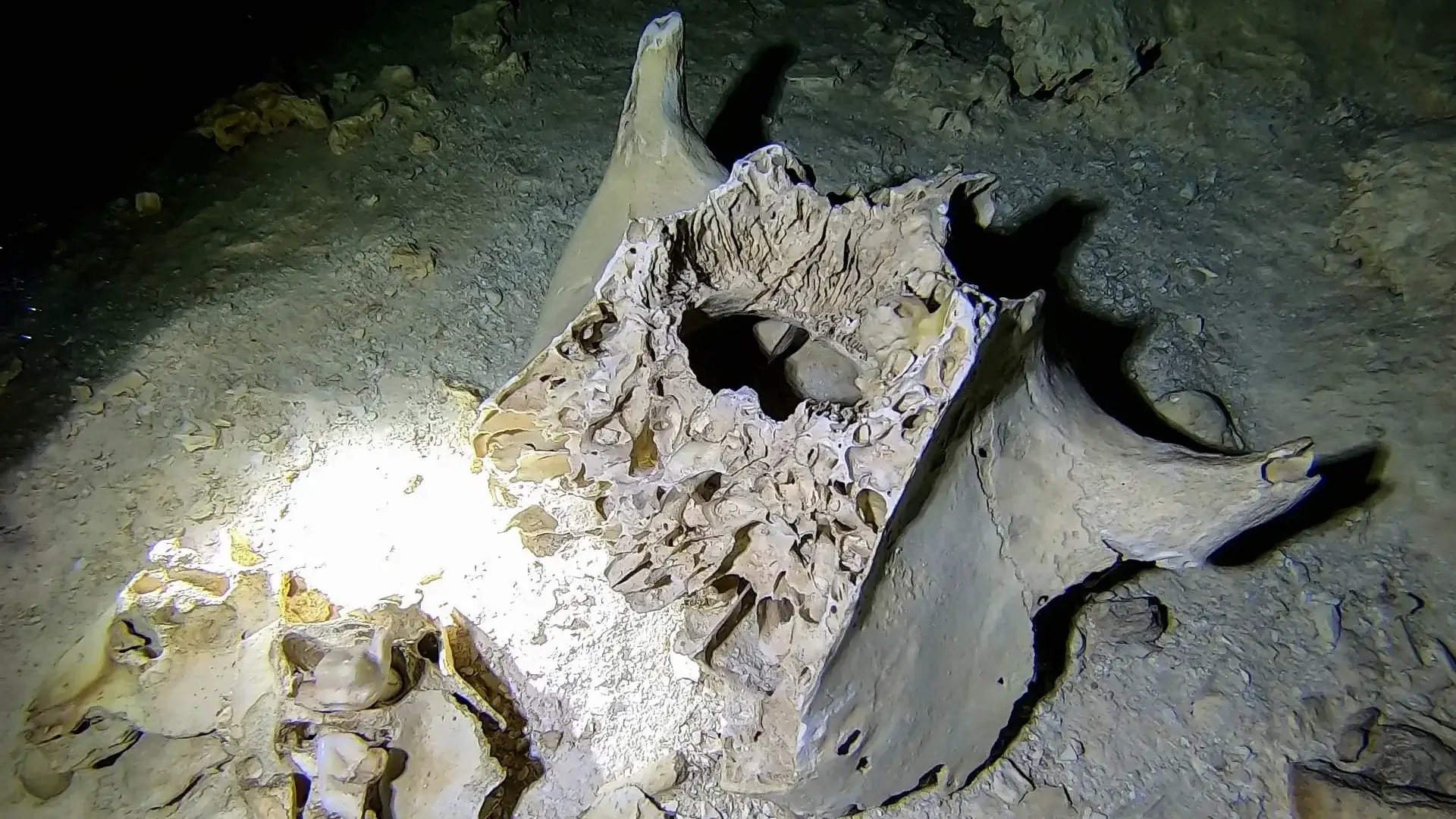
Cenotes A History
The creation of the world’s largest underwater cave system
There are over 7000 cenotes in the Yucatan peninsula! With the cave System Sac Actun (meaning white cave in Mayan) joining over 226 cenotes itself and extending for more than 368.6 km. This is the world’s largest underwater cave system at an average depth of 21 meters and a maximum depth of 119m.
MILLIONS OF YEARS IN THE MAKING
Millions of years ago the Yucatan peninsula was one huge coral reef system. Then came the Ice ages which drastically changed the water levels, exposing the corals and shell that was now a 2.5km/1.6mile thick limestone platform. Several times the water level exposed the reef to the elements and acidic rain.
This rain dissolved its way through the rocks carving huge passages on its way out to sea, forming massive underground river systems leading out into the Caribbean. There are no above ground rivers or lakes in the Yucatan peninsula, all are below.

At the peak of the Ice Age about 20,000 years ago the sea level was 120 meters below its current level!
González-González et al (2008) and Blanchon & Shaw (1995)
With the fluctuations in sea level over the years some caves became dry, leaving time for millions of beautiful stalagmites and stalactites to form; from the size of small straws to huge tree trunks. These formations grow only about 0,4 inches every 1000 years showing the immense history stored in these rocks and cave systems.
With the water level changes also came less support to the cave roof which collapsed in places, creating some of the open cenotes we know today.
As the sea level eventually steadied and started to rise again around 18,000 years ago the cenotes became flooded again. The sea water entering from the bottom and fresh rainwater from the top, creating two distinct layers flowing one on top of the other. Where they meet is called the halocline producing stunning visual effects.
MAYANS AND THE IMPORTANCE OF CENOTES
As the main water source of the area, the cenotes were of great importance to the Mayans. They had a dual symbology of life and death. They were the life giving water source but also considered to be the gateway to Xibalbá, the world of the dead.
The cenotes were home to the god of rain Chac who watched over Xibalba. He is often depicted in ancient artwork with his mouth gaping open, like a great entrance to a cavern. Therefore inside the cenotes offerings and rituals were performed to please the gods. Archaeologists have discovered Jade, pottery, gold and incense at the bottom of sacred cenotes along with human remains.
Studies performed on human remains found at the cenote in Chichen Itza showed wounds consistent with that of a human sacrifice. However many cenotes which also house human remains show no such wounds and the cenote could have simply been an alternative burial place for awaiting the next cycle in life.
The Mayan gods were served by the Alux, spirits of light and according to legend they swept through the cenotes every day at 5 pm turning off all the lights. Since most cenotes are still privately owned by devout Mayan families they still close at 4:59 pm.
ANCIENT BONES
Several human skeletons as old as 12000 years old have been found in the depths of the cenotes, as well as many hundreds of animals that roamed the area during the ice age.
Hoyo Negro is a one of a kind site, a deep pit within the system Sac Actun cave that acted as a fatal trap for many animals walking through the cave. The bones found there are from between 38,000 and 13,000 years ago during the Late Pleistocene Epoch period. There are giant sloths, gomphotheres (like elephants), tapirs, sabretooth cats, and the famous skeleton of Naia, the most complete bones of an early human found in the Americas. Many other caves also house animal remains though more scattered, most bones are located deep within the caves with many once lying close to the exits now housed in museums.
Many of the human remains found protected by the cave and waters have given scientists great information about the past. Naia’s bones – more than 12,000 years old – showed us she was 15-17 years of age at her death when she most likely fell into the pit. Her bones show a hard life with times of malnutrition; one of her upper arm bones is only as thick as her little finger and the shin bone and knee bones are striped with lines etched by halting growth. This was possibly from too little food or health problems – such as parasite infections – which prevented her from absorbing nutrients. The smoothness of her bones where muscles would have been attached shows underdeveloped arm muscles, but strong thighs. She didn’t routinely grind seeds, work animal skins or carry heavy loads; common tasks during her time, but probably roamed widely over the landscape. Her pelvis also revealed that she had had a child.
Other remains that have been found in excellent condition are the mujer de Las Palmas, a woman between 44 and 50 years old, 1.52cm tall and weighing about 58 kilos. From her remains it has even been possible to recreate her physical appearance, finding features that are close to those of the Southeast Asian population. These are key pieces to understanding the history of America, “since they strengthen the hypothesis that the American continent was populated from various migrations from Asia,” according to the National Institute of Anthropology and History (INAH).
Other important remains are the Joven de Chan Hol, the Mujer de Naharon, and the Hombre del Templo.



